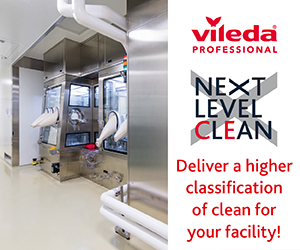In recent years, a clear trend has emerged towards the use of ever more concentrated disinfectants and rigorous sterilisation routines. While the guidance behind this is fully understandable, it can reduce the lifespan of the furniture built from 304-grade stainless steel. This will in turn increase the total cost of ownership for fixtures and fittings.
Time for an up-grade?
316-grade stainless steel, which is more resistant to corrosion and thus VHP-robust, is consequently becoming the default for cleanroom design.
In terms of composition, 316-grade steel adds molybdenum to the chromium and nickel that is found in 304-grade. This makes it tougher, but other than that there is no significant difference between the grades when it comes to their hygienic qualities. Clearly a little molybdenum can go a long way.
Should you rough it out?
However, it is worth bearing in mind the grade itself isn’t the only factor to consider. Actually, to understand why 304-grade is vulnerable to chloride corrosion we need to consider the surface roughness. Stainless steel can be finished to different levels of smoothness. The coarseness of the surface finish is measured by the Ra count.
Chemicals, notably those in disinfectants, can pool in the micropores of coarser surfaces if they are not thoroughly cleared with Isopropyl Alcohol (IPA) wipes. Over time the trace amounts of chemicals in these micro-pools will corrode and stain the passive layer of the stainless steel, a process often known as rouging.
There are two options for avoiding this: the first is simply to accept a faster replacement cycle for the furniture; the second is to opt for smoother and more chemically resistant surfaces, 316-grade or TRESPA TopLab for instance.
(Work) back for the future
When planning a new cleanroom it’s important to work back from the intended cleaning and sterilisation standard operating procedure (SOP). In this way, you can be certain the furniture you choose will be capable of withstanding the chosen processes.
When considering that the concentrations of some disinfectants have doubled in recent years, future trends have to be factored into the equation. However, do also bear in mind that while over- specifying is less of a risk, it could ultimately be almost as wasteful as under-specifying.
Don’t discount 304-grade out of hand, at least not if you are certain the SOP won’t need to change during the cleanroom’s lifetime. That’s a gamble though, while there is the option to re-passivate and/or electropolish existing work-tops, it’s expensive and it won’t be possible for every piece of furniture.
There’s little doubt that tougher is becoming the norm. Regulatory standards change, and given the direction of traffic on cleaning practices we can safely assume they are unlikely to become less exacting. As such, 316-grade - better still with a lower surface roughness - is likely to be the most future proofed option.





